This image illustrates Mars Global Surveyor studying the planet.
Click on image for full size
Image from: NASA/JPL
The Martian Ionosphere
The Martian ionosphere is a layer of gas composed of ions and electrons that
extends from about 75 miles up to several hundred miles up above the surface. The layer is shown schematically by the shaded region circling the planet (not to scale). Temperatures in this region are very hot. Unlike the Earth's ionosphere, the Martian ionosphere is not shielded from the solar
wind by a strong planetary magnetic field. New measurements by Mars Global Surveyor show that the magnetic field of Mars is weak. This region may have a complicated interaction with the Martian magnetosphere.
Measurements by Mars Global Surveyor will help scientists study
Mars' ionosphere and compare it with those of Earth and Venus. The ionosphere of Mars was even used to help brake the spacecraft and place it into a circular orbit.
You might also be interested in:
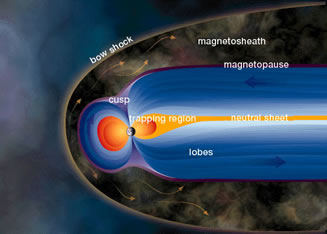
A magnetosphere has many parts, such as the bow shock, magnetosheath, magnetotail, plasmasheet, lobes, plasmasphere, radiation belts and many electric currents. It is composed of charged particles and
...more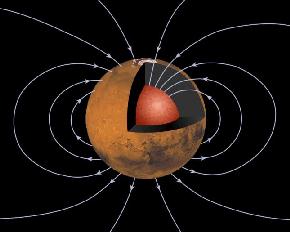
An important new result from the Mars Global Surveyor (MGS) mission is the definite confirmation of the presence of a magnetosphere around Mars. Previous missions made inconclusive measurements of the
...more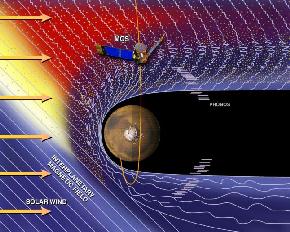
An important new result from the Mars Global Surveyor (MGS) mission is the definite confirmation of the presence of a magnetic field near Mars. The magnetic field leads to the formation of a magnetosphere,
...more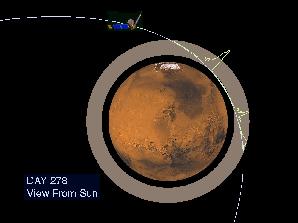
On September 12, 1997, the Mars Global Surveyor successfully entered a highly elliptical orbit around Mars. To get into the near-circular, near-polar, low-altitude orbit necessary to map the surface of
...more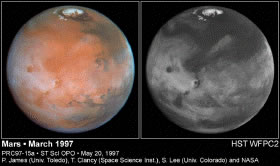
Unlike the Earth, where clouds are found around the entire globe, on Mars, clouds seem to be plentiful only in the middle latitudes, as shown in this Hubble telescope image. This may be because water of
...more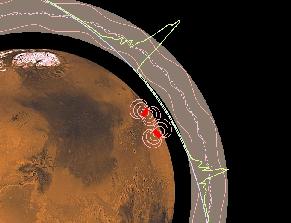
The Martian ionosphere is a layer of gas composed of ions and electrons that extends from about 75 miles up to several hundred miles up above the surface. The layer is shown schematically by the shaded
...more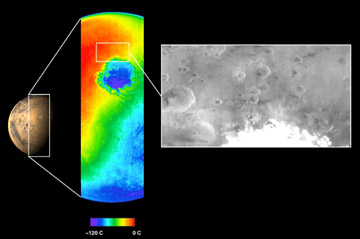
The Mars Odyssey was launched April 7, 2001, from Cape Canaveral Air Force Station in Florida. After a six-month, 285 million-mile journey, the Odyssey arrived at Mars on October 24, 2001 (02:30 Universal
...more














